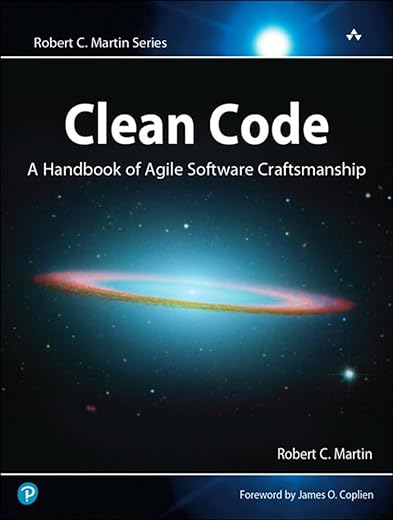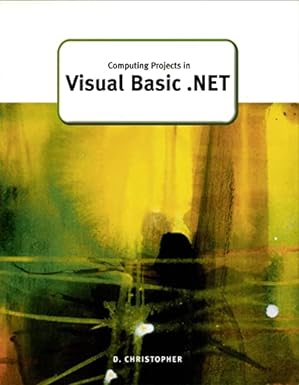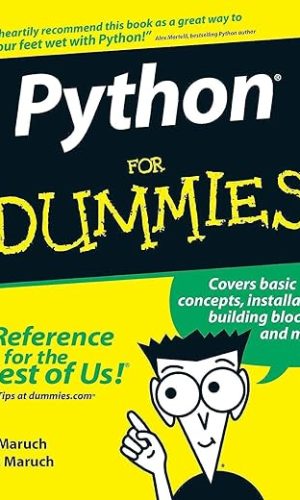Clean Code: A Handbook of Agile Software Craftsmanship (Robert C. Martin) (Robert C. Martin Series)
£35.00£38.00 (-8%)
Even bad code can function. But if code isn’t clean, it can bring a development organization to its knees. Every year, countless hours and significant resources are lost because of poorly written code. But it doesn’t have to be that way. Noted software expert Robert C. Martin presents a revolutionary paradigm with Clean Code: A Handbook of Agile Software Craftsmanship . Martin has teamed up with his colleagues from Object Mentor to distill their best agile practice of cleaning code “on the fly” into a book that will instill within you the values of a software craftsman and make you a better programmer—but only if you work at it. What kind of work will you be doing? You’ll be reading code—lots of code. And you will be challenged to think about what’s right about that code, and what’s wrong with it. More importantly, you will be challenged to reassess your professional values and your commitment to your craft. Clean Code is divided into three parts. The first describes the principles, patterns, and practices of writing clean code. The second part consists of several case studies of increasing complexity. Each case study is an exercise in cleaning up code—of transforming a code base that has some problems into one that is sound and efficient. The third part is the payoff: a single chapter containing a list of heuristics and “smells” gathered while creating the case studies. The result is a knowledge base that describes the way we think when we write, read, and clean code. Readers will come away from this book understanding How to tell the difference between good and bad code How to write good code and how to transform bad code into good code How to create good names, good functions, good objects, and good classes How to format code for maximum readability How to implement complete error handling without obscuring code logic How to unit test and practice test-driven development This book is a must for any developer, software engineer, project manager, team lead, or systems analyst with an interest in producing better code.
Read more
Additional information
| Publisher | Prentice Hall, 1st edition (1 Aug. 2008) |
|---|---|
| Language | English |
| Paperback | 464 pages |
| ISBN-10 | 9780132350884 |
| ISBN-13 | 978-0132350884 |
| Dimensions | 17.78 x 2.79 x 23.37 cm |










by dean
Brought this as I’m starting a career in software development. its been a great insight so far, highly recommended.
by Daniel
I knew this was going to be an excellent book from the moment I heard Uncle Bod describing his ideas of Clean Code at his key note at an ACCU conference. I bought the book there and then, but didn’t start reading it until a couple of years later. More recently I got it signed by Uncle Bob at Skillsmatter. After just a few pages it propelled itself into my top three books every programmer should read (behind Kent Beck’s Test Driven Development and The Pragmatic Programmer by Andy Hunt & David Thomas) and at the end it’s still there.
The chapter on comments is worth the price of the book alone. I have worked in places over the last few years, where comments have been encouraged to explain the code, rather than writing code that explains itself. Another great chapter is the one on functions and the advice to keep them small is especially good and compelling. As I look back over the table of contents now, every chapter that describes how to improve an aspect of code is an absolute mine of good advice.
The final few chapters contain a number of refactorings. One on an application from the ground up and the others on existing code written by other people. This is the only place where the book got gratuitous and I must admit I skipped most of the final refactoring.
The final chapter is a summary of the advice given in the rest of the book and something I will find myself referring to again and again.
If you’ve read Test Driven Development and The Pragmatic Programmer, make sure you read Clean Code next.
by Steven Gilham
Great book
by Mr. Paul J. Grenyer
This is a great book, and one which any developer will learn a great deal from. In most respects, it is a five-star book, but… the title is misleading. By rights it should be called “Clean Java Code”.
Let me explain: I am an ActionScript developer, and bought this book to improve my code style and structure. For the most part, it has done that: the chapters on naming, comments, functions and classes are absolutely superb. But then, huge swathes of the book are devoted exclusively to Java, and use some fairly complex (and, in my opinion, not very well formatted) code to convey their intention.
I don’t generally have a problem with using Java-oriented books to learn more general programming concepts (Martin Fowler’s “Refactoring” and O’Reilly’s Head-First Design Patterns are both books I would recommend to anyone, regardless of their language-of-choice), but around 1/3rd of Bob Martin’s book is virtually impenetrable to anyone who does not already have significant Java experience.
That said, I should re-iterate that this book will be hugely valuable to any programmer. I just wish that they had tried to use a little more pseudo-code and a little less real-world examples, with all of the complexities entailed, and I think a lot could have been done to make the Java code more readable for users of other languages.
by Terrence Munyunguma
The book was clean and brand new. Delivered faster than I expected. Awesome read. Definitely recommend
by Andrej Lavrinovic
So good. So easy formulated. So useful. A lot of things are so obvious, but for some reason not many developers are following such elementary rules. Highly recommend to read, and doesn’t metter if you experienced developer or just begginer. I also wish this book to be translated on indian languages. Guys, I very much like you. We are very close mentally. I have a lot of indian friends due to proffession. But, the way you coding is …. pleas, please, please – read this book.
by Terrence Munyunguma
Every so often, a book comes along that codifies best practice in a way that manages to illuminate the path from where things are right now, to a better place that we’d rather be — things like Fowler et al.
Refactoring: Improving the Design of Existing Code (Object Technology Series)
or the Gang of Four
Design patterns : elements of reusable object-oriented software
. This is one of those books. And if much of the material is the sort that seems obvious in hindsight — well, that is the mark of a well written book, to make the concepts that clear.
Taking a series of real world examples — open source projects with significant user bases, including FitNesse and JUnit — a series of worked examples take us from good, or at least adequate, code, to a form which is better factored, and easier to read, with the steps along the way clearly marked. Yes, even some of Kent Beck’s code is put under the microscope, and carefully polished that extra stage or two more.
The reader is cautioned that, without working long hours to follow these examples, this will be just another of those feel-good books. I don’t quite agree — spending just a little time to follow the transformations, and then reflecting on one’s own outpourings should be enough to make this a feel-bad book. All the sins from obscurely named variables to sprawling functions that gaily mix abstraction levels, we’ve all done them (especially programming in FORTRAN on minicomputers with slow stacks and a rule of thumb that 1 call ~ 40 loc in terms of performance).
The maxim to take from the book is based on Baden-Powell’s “Try and leave this world a little better than you found it”, and owes to the same school of thought as “whenever you are in the garden, pull at least one weed”. The meat of the book is in distinguishing what are the weeds from the intended crop.
So read it, understand the examples, and then refer to it often — like the other titles mentioned, it is a reference work, and should join them as among the most thumbed on your bookshelf.